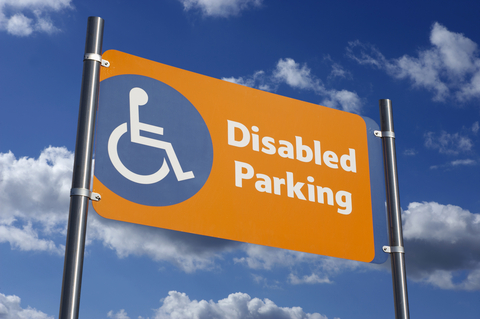 The Americans with Disabilities Act protects people with disabilities from discrimination and empowers them to enjoy a quality of life equal to non-disabled persons. The act sets forward some requirements for business in terms of employment rights and accessibility. Small businesses would do well to remain in compliance with this law, as violations can have some serious consequences in terms of public relations and penalties if the business is sued for a violation by the Justice Department.
The Americans with Disabilities Act protects people with disabilities from discrimination and empowers them to enjoy a quality of life equal to non-disabled persons. The act sets forward some requirements for business in terms of employment rights and accessibility. Small businesses would do well to remain in compliance with this law, as violations can have some serious consequences in terms of public relations and penalties if the business is sued for a violation by the Justice Department.
The Americans with Disabilities act was signed into law by President George H.W. Bush in 1990 and essentially is a civil rights law for disabled citizens. The generalized intent of the law was to prevent discrimination that could keep disabled persons from engaging in major life activities. Major life activities has a broad definition under the law.
With regard to business, the ADA’s impact is felt the most in employment and facilities issues.
Employment
The Americans with Disabilities Act says that businesses covered under the act may not discriminate against qualified workers who may have a disability in application, hiring, advancement, release, job training, etc.
Essentially, businesses cannot discriminate against qualified individuals based on their disability, and must make accomodation to allow qualified individuals to perform their jobs if they are hired or retained by a business.
Accessibility
The ADA has a broad list of construction requirements to help make facilities more accessible to the disabled. This includes wheelchair ramps, railings, chair and table height, etc. The law also can make some requirements with regard to communications for customers, including special communciations devices. Businesses may also be required to grant access to service animals used by disabled customers and employees.
A detailed list of construction requirements for the ADA can be found at http://www.ada.gov/smbustxt.htm.
Costs
It’s a popular misconception that the ADA has resulted in huge costs to businesses. There are certain limitations to the steps the ADA can require of a business. In general, the ADA requires only changes that are readily achievable from an architectural and sometimes financial stand point. A survey made by a major corporation found that ADA-required changes it was compelled to make had a negligible cost 69 percent of the time.
Grandfather clause
As it is recognized that older businesses may have difficulty in complying with some access requirements of the ADA, business facilities built before 1993 have less strict rules governing them than post-1993 constructions or additions.
Tax credits
To help out with the costs of complying with the law, tax credits are available for all businesses and small businesses. One tax credit is available to businesses with revenues of less than $1 million per year or that employ less than 30 full-time workers. The credit offsets half the cost of ADA compliance renovations up to $10,250 per year.
The deduction, available to businesses of all sizes, is for $15,000 per year.
By complying with the ADA, you do your business two favors: You avoid looking unfriendly to the disabled community and you also provide better access to valuable customers and employees.









